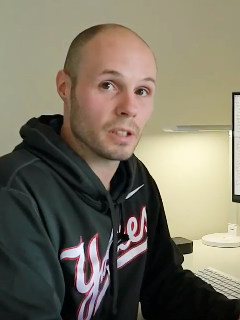Hazel Becker’s lengthy career as a journalist, including many years as a freelancer, gives her the flexibility to hit the gym each day before she settles in for a few hours of writing, projects and emails.
emails.
She also knows a bunch of younger journalists who relish the idea of not being tied down in an office because they want the freedom to be able to travel or go do their work on the beach.
“Freelancing is growing by leaps and bounds,” Becker said.
Becker started freelancing in the 1970s. Back then, she wasn’t allowed to work at the same or competing newspaper as her husband.
“It might have been the best thing that could have happened to me,” Becker said. “I loved it. I loved the freedom.”
She was ultimately hired by one of her freelance clients and worked there for years. But Becker went back to freelancing about a decade ago and has seen the landscape change even in that time.
“I would say to some extent in a negative way, but then you have to take the opportunities that those negative things present,” Becker said. “With all the layoffs in the industry, a lot of people are turning to freelancing now.”
One of the biggest changes was having so many more options to find work, applying for things she saw on the internet. Becker has also seen a lot more experienced journalists take up freelancing gigs.
“I see the rise in professionalism among freelancers and the rise in recognition of the need for professionalism,” Becker said.
The other important piece of advice Becker offers is for freelancers to find people in the industry to learn from. Join freelance communities or network with those doing similar work. Find a chance to learn something you have in a job in a newsroom, for example, Becker said.
Besides journalism, the freelance world has expanded across a lot of different fields. Lexy Smith, a senior recruiter and client service manager at Dahl Consulting in Roseville, Minn., has also noticed the uptick in various companies hiring for contract positions recently.
“It’s a lot safer for companies to go that route,” Smith said, adding that contract hiring has increased.
A study from the Freelancers Union and platform Upwork found that about half the people in the workforce will be freelancers by about 2027.
Dahl helps companies of all different sizes fill positions for contract workers.
Contract work can be a little different than freelancing, in that workers are brought on with a company for a specific length of time, often for a specific project, for 40 hours per week. Dahl helps companies find people to do project-style work within a wide variety of skillsets, from customer service representatives, accounting and finance, general business and all the way up to high-level IT professionals.
For companies, getting work done with contract employees is a safer approach, especially within the current market, Smith said.
“Because they’re not tied to any sort of employee benefits, so they don’t have to worry about providing that when they go through a company like ours,” Smith said.
For freelancers and contract workers, one of the biggest perks is the flexibility it offers. People aren’t tied down to an 8 a.m. to 4 p.m., Monday through Friday work week. They have the ability to get the work done on their own time. Smith also sees a lot of people who seek contract jobs to help fill the gap while they’re in the midst of a job search seeking a new full-time position.
Though the demand for contract workers can be a bit seasonal, according to Smith, the trend of freelance/contract work is here to stay.
“I don’t see it going away any time soon,” Smith said.
